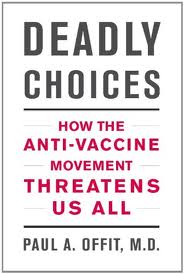February 3rd, 2011 by GarySchwitzer in Better Health Network, Opinion
No Comments »

 I have gushed praise for the Milwaukee Journal Sentinel for a long time. (Disclosure: I cut my teeth in journalism as a Journal Company employee way back in 1973. No ties since 1976.) As a mid-market newspaper facing all of the same hurdles as other newspapers, it consistently demonstrates tenacity and creativity in tackling vital healthcare issues in this country. The latest: A project called “Empty Cradles: Confronting Our Infant Mortality Crisis.”
I have gushed praise for the Milwaukee Journal Sentinel for a long time. (Disclosure: I cut my teeth in journalism as a Journal Company employee way back in 1973. No ties since 1976.) As a mid-market newspaper facing all of the same hurdles as other newspapers, it consistently demonstrates tenacity and creativity in tackling vital healthcare issues in this country. The latest: A project called “Empty Cradles: Confronting Our Infant Mortality Crisis.”
While there is a great health/medicine/science team in place at the Journal Sentinel, I believe that much of the credit goes to the top — to editor Marty Kaiser, who clearly understands that healthcare issues are among the most important his paper can report on in serving public needs. Kaiser writes:
“The Journal Sentinel today takes on an issue we have too long ignored — the death of children before their first birthday. Infant mortality is a crisis not just of public health, but of ethics and morality. The rate at which infants die in our city is unacceptable. In 2011 we will examine the problem and point to solutions.”
The project is off to a great start, taking a global picture and focusing it locally. Read more »
*This blog post was originally published at Gary Schwitzer's HealthNewsReview Blog*
February 2nd, 2011 by Edwin Leap, M.D. in Better Health Network, Opinion
No Comments »

My partners and I have long struggled with the lack of specialty back-up at our hospital. Semi-rural hospitals, out of the way facilities, just can’t always attract specialists. So, we’re happy to have cardiologists every night, but understand that we only have an ENT every third night. We’re thankful to have neurologists, even if they don’t admit anyone. We’re glad to have radiologists, even if they don’t read plain films after 5PM on weekdays.
Still, I continue to scratch my head about why only three of seven community pediatricians take call, such that family physicians have to admit their patients. I was bumfuzzled that our neurologists were previously going to require us to use telemedicine for stroke evaluation when their offices were close by the hospital. (In the same year they were called in roughly three times per neurologist for urgent stroke evaluation.) That problem was resolved, thank goodness.
Now, I find that the problem has returned and grown. We will, very soon, have no ophthalmologist on call, despite the fact that we have three in the community and that they are contacted with remarkable rarity to deal with on-call emergencies. Soon, we will have no neurologist on the weekend. And the pediatric problem remains.
Of course, I’m using my local experience to highlight something that isn’t a local problem at all. It’s a national problem. All over America, specialists are relinquishing their hospital priveleges and staying in the office. Proceduralists are opening surgery centers that are free from the burdens of indigent care. Primary care physicians are allowing hospitalists to do all of their admissions.
In the process, not only are patients losing out, but referral centers are being absolutely overwhelmed. The cities and counties that lie around teaching hospitals are sending steady streams of patients, since they have fewer and fewer specialists. Those referral and teaching centers want patients, but they can’t take all of the non-paying patients, all of the complicated, or even all of the mundane patients with no local coverage. Those facilities, for all their shiny billboards and “center of excellence” marketing, will collapse. Read more »
*This blog post was originally published at edwinleap.com*
February 1st, 2011 by RyanDuBosar in News, Research
No Comments »

Real total direct medical costs of cardiovascular disease (CVD) could triple, from $273 billion to $818 billion (in 2008 dollars) by 2030. Real indirect costs, such as lost productivity among the employed and unpaid household work, could increase 61 percent, from $172 billion in 2010 to $276 billion.
Results appeared in a policy statement of the American Heart Association.
CVD is the leading cause of mortality and accounts for 17 percent of national health expenditures, according to the statement. How much so? U.S. medical expenditures rose from 10 percent of the Gross Domestic Product in 1985 to 15 percent in 2008. In the past decade, the medical costs of CVD have grown at an average annual rate of 6 percent and have accounted for about 15 percent of the increase in medical spending.
The spending is associated with greater life expectancy, “suggesting that this spending was of value,” the authors wrote. But as the population ages, direct treatment costs are expected to increase substantially, even though lost productivity won’t, since seniors are employed at lower rates.
If current prevention and treatment rates remain steady, CVD prevalence will increase by about 10 percent over the next 20 years. The estimate reflects an aging population, and one that is increasingly Hispanic. To prepare for future cardiovascular care needs, the American Heart Association projected future costs. By 2030, 40.5 percent (116 million) of the population is projected to have some form of CVD. Read more »
*This blog post was originally published at ACP Internist*
January 31st, 2011 by Bryan Vartabedian, M.D. in Book Reviews, Opinion
No Comments »

 A friend suggested she was tired of hearing about vaccines. Her comment and our subsequent conversation seemed to reflect an important shift in parent sentiment: The conversation about vaccines is beginning to get somewhere.
A friend suggested she was tired of hearing about vaccines. Her comment and our subsequent conversation seemed to reflect an important shift in parent sentiment: The conversation about vaccines is beginning to get somewhere.
While much of this was born of the mainstream media’s newfound realization that the vaccine-autism connection was cooked, some of this is due to the tireless work of those like the Children’s Hospital of Philedelphia’s Dr. Paul Offit who get the story right.
As part of his passionate agenda to expose vaccine truths, he’s published “Deadly Choices: How the Anti-vaccine Movement Threatens Us All” (Basic Books, 2011). For those looking to understand the origins of anti-vaccine sentiment, read this book.
What struck me is the deep history behind the anti-vaccine movement. From Jenner’s smallpox fix to modern-day MMR struggles, Offit draws fascinating corollaries surrounding immunization that seem to defy the generations. Vaccine resistance was not born of Andrew Wakefield, but broader concerns rooted in religion, individual liberty, fear and propaganda. “Deadly Choices” puts the anti-vaccine movement in a historic sequence that reads like good suspense. I couldn’t put it down. Read more »
*This blog post was originally published at 33 Charts*
January 30th, 2011 by Glenn Laffel, M.D., Ph.D. in News, Research
No Comments »

 Although cocaine use has declined steadily since its peak in the early 1980s, public health officials estimate that about 7 million Americans used the drug at least once last year. Many of these folks are addicted to the drug, and its intense, short-lived euphoric effects mean the addiction is terribly difficult to overcome.
Although cocaine use has declined steadily since its peak in the early 1980s, public health officials estimate that about 7 million Americans used the drug at least once last year. Many of these folks are addicted to the drug, and its intense, short-lived euphoric effects mean the addiction is terribly difficult to overcome.
Addiction specialists believe existing treatment paradigms for cocaine addiction can be enhanced by a vaccine that prevents the drug from crossing the blood-brain barrier, thus blunting its euphoric effects. Scientists have worked hard to develop such a vaccine, but have had limited success so far.
About a year ago for example, Thomas Kosten and colleagues at Baylor reported partial success in a human trial of a cocaine vaccine. In that trial, 38 percent of subjects who received all five shots in the vaccine series achieved sufficient antibody levels to blunt the effects of the drug. In that subset, 53 percent of the subjects stopped using cocaine, meaning that overall, the vaccine worked about 20 percent of the time. Read more »
*This blog post was originally published at Pizaazz*
 I have gushed praise for the Milwaukee Journal Sentinel for a long time. (Disclosure: I cut my teeth in journalism as a Journal Company employee way back in 1973. No ties since 1976.) As a mid-market newspaper facing all of the same hurdles as other newspapers, it consistently demonstrates tenacity and creativity in tackling vital healthcare issues in this country. The latest: A project called “Empty Cradles: Confronting Our Infant Mortality Crisis.”
I have gushed praise for the Milwaukee Journal Sentinel for a long time. (Disclosure: I cut my teeth in journalism as a Journal Company employee way back in 1973. No ties since 1976.) As a mid-market newspaper facing all of the same hurdles as other newspapers, it consistently demonstrates tenacity and creativity in tackling vital healthcare issues in this country. The latest: A project called “Empty Cradles: Confronting Our Infant Mortality Crisis.”















